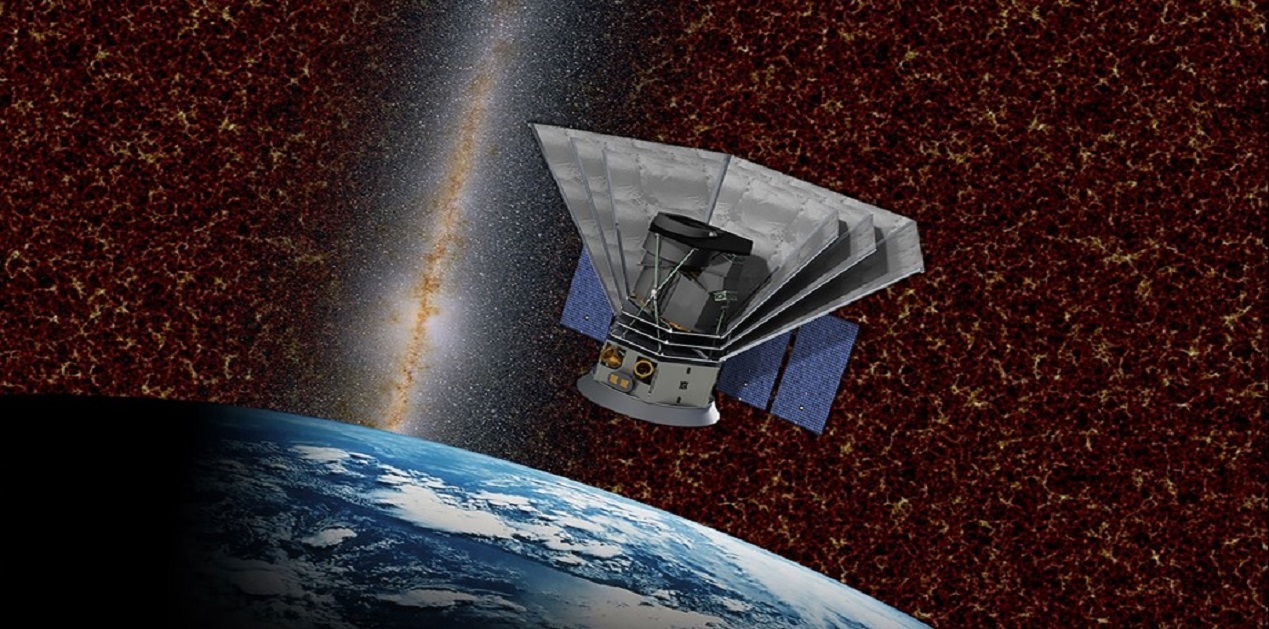The space age began with the launch of Sputnik in 1957 by the erstwhile USSR and transpired to be an eminent infrastructure to back the nuclear and conventional military capabilities of the two super powers in the cold war era, as it assuaged the mistrust between the opposing parties by supporting their intelligence. It was confined to be a super power feat at its genesis, although is now shared by the technologically competent and matured nations as the very basic “infrastructure of infrastructure” to support their subsistence1.
By the turn of this century, a growing number of countries and commercial players started viewing the space commons from the lens of development and national security. There seems to be an awakened sense of cogisance on the need and worth of investing in the space technologies to grasp just a slight perception of self-reliance and potency in the approaching global showdown. Traditionally, reconnaissance, communications, navigation and weather monitoring came under the applications of space technology which has gradually evolved across a wide spectrum of civilian, military, scientific and even financial premises of a nation2. From a security perspective, an increasing number of countries are looking to use space to enhance their military capabilities and national security. 3
Today, the possession of space assets and proficiency plays a vital role in the formulation and implementation of great power strategies across the globe. In the international psyche it serves as a force multiplier that enhances national power and prestige.4 Concurrently, nations developed a hindsight for protecting their space might through means of counter technologies. One of the leading realist scholars on space power, Everett Dolman, makes this case, “if some state or organization should desire to contest or control space, denying the fruits thereof to another state, there is simply no defense against such action—there is only deterrence through the threat of asymmetric, Earth-centered retaliation.”5 And amidst this growing reliance on space systems and a commensurate growth in the vulnerability to these systems, the space domain has progressively militarized.
Space assets veritably make for lucrative targets to bring an entire nation to a standstill. Hence, simply possessing the ripened technologies to develop their own space crafts and satellites is not enough for the aspiring hard powers in the evolving state of affairs. The growing use of, and reliance on, space for national security has also led more countries to look at developing their own counter-space capabilities. Counter-space, also known as space control, is the set of capabilities or techniques that are used to gain space superiority. Space superiority is the ability to use space for one’s own purposes while denying it to an adversary.
In the following section, the article touches upon the countries that have successfully pursued and officially incorporated counter-space capabilities as a part of their aspirations in the space.
The United States of America
The United States was the trailblazer in the counter-space weapons’ technology. Just two years after the launch of Sputnik, the US tested its first Anti-Satellite (ASAT) weapon and continued the course, along with the USSR, throughout the Cold War era. Over the years, it exercised supremacy over the realm, which it naively derived would be out of reach for other nations, as it continued hoisting its satellites in the outer reaches of the space.
Refraining from the mistakes of the past, the US has now timely accepted the possibility of developments and changes in the evolving geo-political landscape. After having been the undisputed leader in space for decades, the US is now witnessing the emergence of new powers. Rising tensions and changes in the balance of power are reviving a new great power competition era, crystallised in the space domain and deeply impacting the global space arena.6 In the US, the anticipation is overshadowed by a possibility of ‘Space Pearl Harbour’ accompanied by outright challenge to the US aspiration of dominating and controlling the space commons. Rumsfeld Report, released in 2001, gave an official warning against this looming danger. This perception has already been translated, through successive Space Policy Directives, in the space exploration domain (SPD-1), in the commercial domain (SPD-2), in the security and safety domain (SPD-3) and, ultimately, in the military domain with SPD-4. On 19 February 2019, President Trump signed the Space Policy Directive 4, directing the US Department of Defense to deliver to the Congress a legislative proposal for the creation of a Space Force.7 However, the US still has an undeniable edge over the other budding players in the game.
China
There is considerable evidence which indicates that China has put a sustained effort to develop a broad range of counter-space capabilities. China has conducted multiple tests of technologies for rendezvous and proximity operations (RPO) in both low earth orbit (LEO) and geosynchronous orbit (GEO) that could lead to a co-orbital ASAT capability. Chinese direct ascent anti-satellite (DA-ASAT) capability against LEO targets is likely mature and likely in the process of being operationally fielded on mobile launchers. Chinese DA-ASAT capability against deep space targets - both medium Earth Orbit (MEO) and GEO - is likely still in the experimental or development phase.8
Conspicuously, as a part of its Yaogan series of military satellites, China launched a constellation of three satellites into an 1100 km, 63.4° inclination orbit on a CZ 4C launcher on the 5th of March 2010. The spacing of the three satellites, their altitude as well as the inclination is typical of an Electronic Intelligence (ELINT) capability.9 Prior to this launch, the satellites in the Yaogan series consisted of synthetic aperture radar (SAR) and electro-optical imaging satellites. The launch of this three satellite ELINT cluster transformed the Intelligence Surveillance Reconnaissance (ISR) capabilities of the Peoples Liberation Army (PLA) from occasional sporadic surveillance of high value targets such as aircraft carriers into an operational continuous ISR system. This launch also coincided with the US declaring that China’s Anti-Ship Ballistic Missile (ASBM) system had entered ‘Initial Operations Capability’.10 The analysis and the simulation results suggest that China has in place an operational ASBM system that can identify, locate, track and destroy an Aircraft Carrier in the Pacific Ocean.11
Russia
Russia too has shown the will to rebound with some of its Cold War-era counter-space capabilities. Since 2010, Russia has been testing technologies for RPO in both LEO and GEO that could lead to or support a co-orbital ASAT capability, and some of those efforts have links to a Cold War-era LEO co-orbital ASAT program. Russia also places a high priority on integrating electronic warfare (EW) into military operations and has been investing heavily in modernizing this capability. Russia has a multitude of systems that can jam GPS receivers within a local area, potentially interfering with the guidance systems of unmanned aerial vehicles (UAV), guided missiles, and precision guided munitions, but has no publicly known capability to interfere with the GPS satellites themselves using radiofrequency interference.12
In August 2018, Vice President Mike Pence laid out the Trump administration’s plans for space reorganization in a speech delivered at the Pentagon. In his remarks, the Vice President spoke at length about the threats posed to US space systems by other nations, specifically Russia and China: “Russia has been designing an airborne laser to disrupt our space based system[s]. And it claims to be developing missiles that can be launched from an aircraft mid-flight to destroy American satellites. Both China and Russia have been conducting highly sophisticated on-orbit activities that could enable them to maneuver their satellites into close proximity of ours, posing unprecedented new dangers to our space systems.”13
India
It wasn’t long before India, whose space programme has been lauded at home and internationally alike, made another big announcement on 27 March 2019 to make its way into the club of nations with the credible ASAT capabilities. There seems to be an acceptance to the tacit rules of the present game which dictates that space war is inevitably clubbed with the nuclear and conventional wars that could break over a nation unforeseen and untold. India couldn’t much longer shy away from the altering realities and activities in its neighbourhood. In one of the cases that occurred in January 2007, China conducted an ASAT test that destroyed a defunct weather satellite in an 800 km Sun Synchronous Orbit (SSO) creating a huge debris cloud. Even though India has a number of IRS satellites in orbits very close to this, India did not know about this test and the consequent risk for more than a week.14
Hitherto India’s space programme has focused on the commercial satellites, but of late military has been integrated as an active user and contributor into the domain by the likes of indigenous missile defense programme that had the latent potential to evolve into ASAT missile systems. Underlining these developments is the rising militarisation of the space domain, which cannot be ignored if one has to be secure and rise simultaneously as a comprehensive military power.
The recent move by the leadership might not fall directly into the ambit of national security right at this moment, but it ascertains its indispensable integration into the very national security complex. This assessment is further validated by the changing moods and inclinations of the spacefaring nations. As in the case of a nuclear triad, where the intent has been the development of deterrence capabilities across the three domains of warfare, an addition has been made by impelling strategic deterrence across the space. The role of space-based C4ISR assets complemented by other ground based Space Situational Awareness (information about the space environment) components will now be critical for deciding on the new national strategy for waging war and for preserving the peace through the deterrence of war.15
The ASAT weapon test codenamed as the ‘Mission Shakti’, is seen as a big leap from India’s maiden interceptor ballistic missile test in 2011. As a part of the ballistic missile defence (BMD) programme of the DRDO, incoming ballistic missiles have speeds of about 2,500 metres per second could be targeted, whilst satellites in the LEO, where the target (Microsat-R) of the 27 March test was located, move at a speed of 7,000-8000 metres per second. 16 In the latest demonstration, a DRDO-developed BMD Interceptor Missile successfully engaged an Indian orbiting target satellite in LEO in a ‘Hit to Kill’ mode. The target satellite, Microsat-R described as an imaging satellite,was placed in an orbit of 274 km.17 The Prime Minister also referred an orbit of 300 km.
India has de facto maintained its responsible posture vis-à-vis the placement and upshots of this experiment. The data from the US Air Force has been used by Analytical Graphics Inc. (AGI) to reveal that the debris produced by the test is primarily constrained to the orbit of the original object Microsat-R and because of its relatively low altitude, a lot of that debris is likely going to re-enter the earth’s atmosphere fairly quickly, within days and weeks, to eventually extinguish.18
Another very useful database, shared by Brian Weeden of the Secure World Foundation on the same day, tracks all anti-satellite tests in history, and adds that even with the projected debris from India’s test, China’s 2007 test eclipses the total pieces of significant and trackable debris produced by the United States, Soviet Union and India combined.19 The act had violated the principles of the Outer Space Treaty, even endangering hundreds of other satellites in its vicinity. On the Indian side, the former DRDO chief Dr VK Saraswat in 2012, had vowed against following the suit when China’s ASAT test blew up its satellite into the debris which imperiled other satellites in the space.20 This was indeed the diktat held up by India in the first of its Direct-Ascent ASAT tests. Whether India will now set on a path to further develop a counter-space programme remains to be answered.
Tangible Threats in the Cards
Notwithstanding the progress made in this expanse, space sanitation today is at a greater risk than ever. With high probabilities of proliferation of the counter-space weapons to the non-state actors and other hostile nations, the space has virtually been activated as a trove for exploiting the proneness of the spacefaring countries. Having discovered cyber vulnerabilities that are similar in nature to those found in non-space systems, a growing number of non-state actors are actively probing commercial satellite systems. Jammers and spoofers provide inexpensive weapons to incapacitate the critical infrastructures of a country and are already in use.21
Another potent threat gripping the thinkers of space sacrosanctity is the one from ‘cascade debrification’ – that is, collisions between extant debris and active satellites - or among other debris that causes more debris.22 Presumably, India’s Mission Shakti raised concerns about the debris created against its latest ASAT test, which was marked undisruptive by all except the overplay offered by the NASA administrator Jim Bridenstine’s who pointed to the supposed threat to the International Space Station (ISS) caused by these debris. The silver lining for India, thanks to such qualms, is that India has hit the nail on the head and it’s not debatable.
Approach Ahead
Everything said and done, it is perhaps at this moment that space powers should go for a treaty that should firstly preclude the inclusion of more and more players wielding counter-space technologies against the existing edifice. That should also buttress the non-proliferation of the sophisticated technologies to irresponsible takers. India is much better placed to uphold this objective. Furthermore, if the ASAT-capable powers do not prioritise the debris-limitation essential now, they will achieve neither of the two objectives, much to the detriment of themselves and all space users alike.23 India can lead this narrative with its latest example. A threshold is urgent, like in the case of N-testing, with collaborated and concerted efforts of the space community to sustain the space endowments.
References:
- Harrison, T., et al. (2019). SPACE THREAT ASSESSMENT . CSIS. Retrieved from https://aerospace.csis.org/wp-content/uploads/2019/04/SpaceThreatAssessment2019-compressed.pdf#page=40
- Chandrashekar, S. (2015). Space, War & Security- A Strategy for India. Bengaluru: National Institute of Advanced Studies. Retrieved from http://isssp.in/wp-content/uploads/2016/03/Space-War-and-Security-_A-Strategy-for-India.pdf
- Weeden, B., & Samson, V. (2019, April). Global Counterspace Capabilities: An Open Source Assessment . Secure World Foundation (SWF). Retrieved from https://swfound.org/media/206406/swf_global_counterspace_april2019_web.pdf
- Chandrashekar, S. (ii)
- Everett, C. D., “New Frontiers, Old Realities,” Strategic Studies Quarterly 6, no. 1 (Spring 2012): 87
- “ESPI BRIEFS” No. 30. (2019 March). The U.S. Space Force and the Rising Stakes for Europe in Space Defence, European Space Policy Institute. Retrieved from
https://espi.or.at/news/espi-executive-brief-30-rising-stakes-for-europe-in-space-defence - Ibid
- Weeden, B., & Samson, V. (iii)
- Chandrashekar, S. (ii)
- Erickson, A., & Collins, G. (2010, December 26). “China Deploys World’s First Long-Range, LandBased ‘Carrier Killer’: DF-21D Anti-Ship Ballistic Missile (ASBM) Reaches ‘Initial Operational Capability’ (IOC),” China SignPost™
- Chandrashekar, S., & Perumal, S. (2015). China’s Constellation of Yaogan Satellites & the Anti-Ship Ballistic Missile: October 2015 Update. ISSSP. Retrieved from http://isssp.in/chinas-constellation-of-yaogan-satellites-the-asbm-october-2015-update/
- Weeden, B., & Samson, V. (iii)
- Pence, M. R. (2018, August 9). Remarks by Vice President Pence on the Future of the U.S. Military in Space. Retrieved from The White House: https://www.whitehouse.gov/briefings-statements/remarks-vice-president-pence-future-u-s-military-space/
- Gordon, M. R., & Cloud, D. s. (2007, April 23). US Knew of China's Missile Test, but Kept Silence. Retrieved from The New York Times: https://www.nytimes.com/2007/04/23/washington/23satellite.html
- Chandrashekar, S. (ii)
- Dutta, A. N. (2019, April 2). NASA is not the final word on space debris from A-SAT, says former DRDO chief Saraswat. Retrieved from The Print: https://theprint.in/science/nasa-is-not-the-final-word-on-space-debris-from-a-sat-says-former-drdo-chief-saraswat/215837/
- Nagappa, R., Deshpande, M., & Chandrashekar, S. (2019, March 28). India's ASAT test. Retrieved from ISSSP: http://isssp.in/indias-asat-test/
- Salazar, D. E. (2019, April 3). These Simulations Reveal What Happened During India's Anti-Satellite Missile Test (Videos). Retrieved from Space.com: https://www.space.com/india-anti-satellite-missile-test-agi-simulations.html
- Weeden, B. ‘History of ASAT tests in Space’. Retrieved from
https://docs.google.com/spreadsheets/d/1e5GtZEzdo6xk41i2_ei3c8jRZDjvP4Xwz3BVsUHwi48/edit#gid=0 - Unnithan, S. (2012, April). 'India attains the capability to target, destroy space satellites in orbit'. Retrieved from India Today: https://www.indiatoday.in/magazine/nation/story/20120507-agni-v-launch-india-takes-on-china-drdo-vijay-saraswat-758208-2012-04-28
- Weeden, B., & Samson, V. (iii)
- Adushkin, V., & et al. (2016). Orbital missions safety – A survey of kinetic hazards. Acta Astronautica, 510-516.
- Dr Siddartha. (2016). “When in a Space Hole, Stop Filling It”. Retrieved from International Foundation for Aviation, Aerospace and Development: www.iffaadindia.org/presentations/4)%20V.%20Sidhartha.pptx
Image Source: https://www.devdiscourse.com/remote.axd?https://devdiscourse.blob.core.windows.net/devnews/14_02_2019_21_42_29_9564353.jpg?width=920











Post new comment